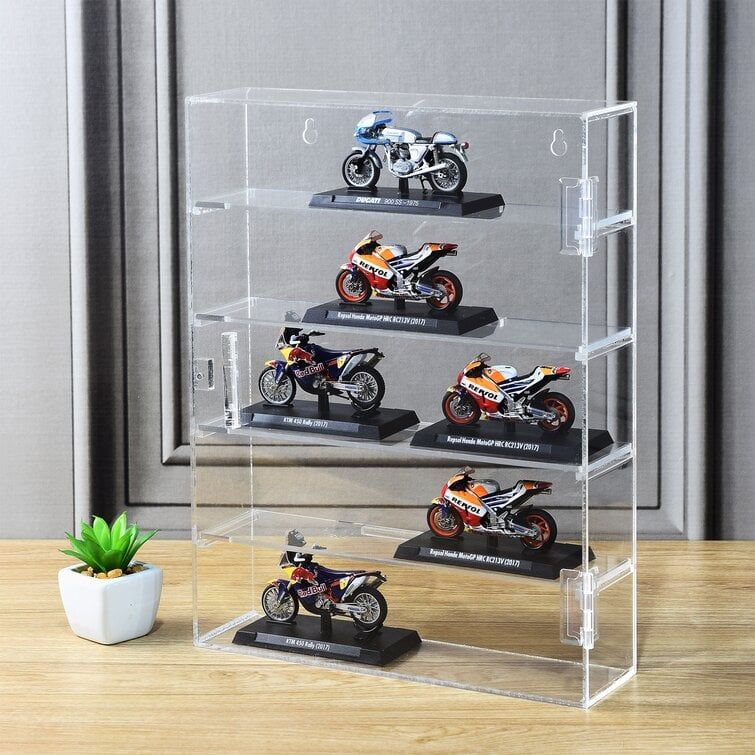Brands can showcase their identities across various industries with highly effective acrylic displays. Acrylic sheets, inhabiting some great features, go well with signage, interior design, retail displays, etc.
Its sleek appearance and superb adaptability make acrylic suitable for a bold and lasting impression. Try some creative strategies outlined in this article to make your brand display stand out among others.
Role of Acrylic Sheet in Displays
Acrylic sheet displays gained immense popularity due to several advantages. The material enhances the visual appeal and identity of a brand.
- Transparency: Glass-like plexiglass acrylic offers a crystal-clear surface, promoting openness and precision. Luxury brands (Apple and Tesla) use transparent acrylic stands to emphasize sophistication in product displays.
- Clean Lines for Minimalist Aesthetic: Modern acrylic displays offer sleek designs to suffice contemporary branding. IKEA and Muji incorporated the acrylic sign for a clean yet understated retail environment.
- Customization: Acrylic can be cut, printed, or molded into various shapes and forms. The lightweight material can be easily installed on the wall (indoor and outdoor). Nike uses acrylic stands with laser-etched logos for an exclusive feel.

Different Types of Acrylic Displays
Incredibly versatile acrylic can be used in various display formats. Some of the most common types –
i. Display Stands: Acrylic sheet stands are popular in retail stores, exhibitions, and corporate settings, such as room dividers. Cosmetic brands like Sephora utilize acrylic stands to showcase their product lines elegantly.
ii. Frames and Signage: Designers opt for acrylic frames to protect and enhance branding visuals, providing greater durability. Some high-end hotels utilize acrylic-mounted signage for directions and branding, creating a functional display.
iii. Product Showcases: Retailers choose acrylic display cases to present high-value jewelry, electronics, and collectibles. Rolex and Cartier have acrylic display boxes to highlight the watch details with security.
iv. Shelving Units: Acrylic shelving allows brands to display decor products in an organized manner. Tech stores like Best Buy use acrylic shelves to showcase artwork and accessories, ensuring clarity and accessibility.
v. Exhibition and Trade Show Displays: Acrylic sheets are common in trade shows for professional-looking display booths. Car companies at auto expos use acrylic display cases to highlight vehicle features.
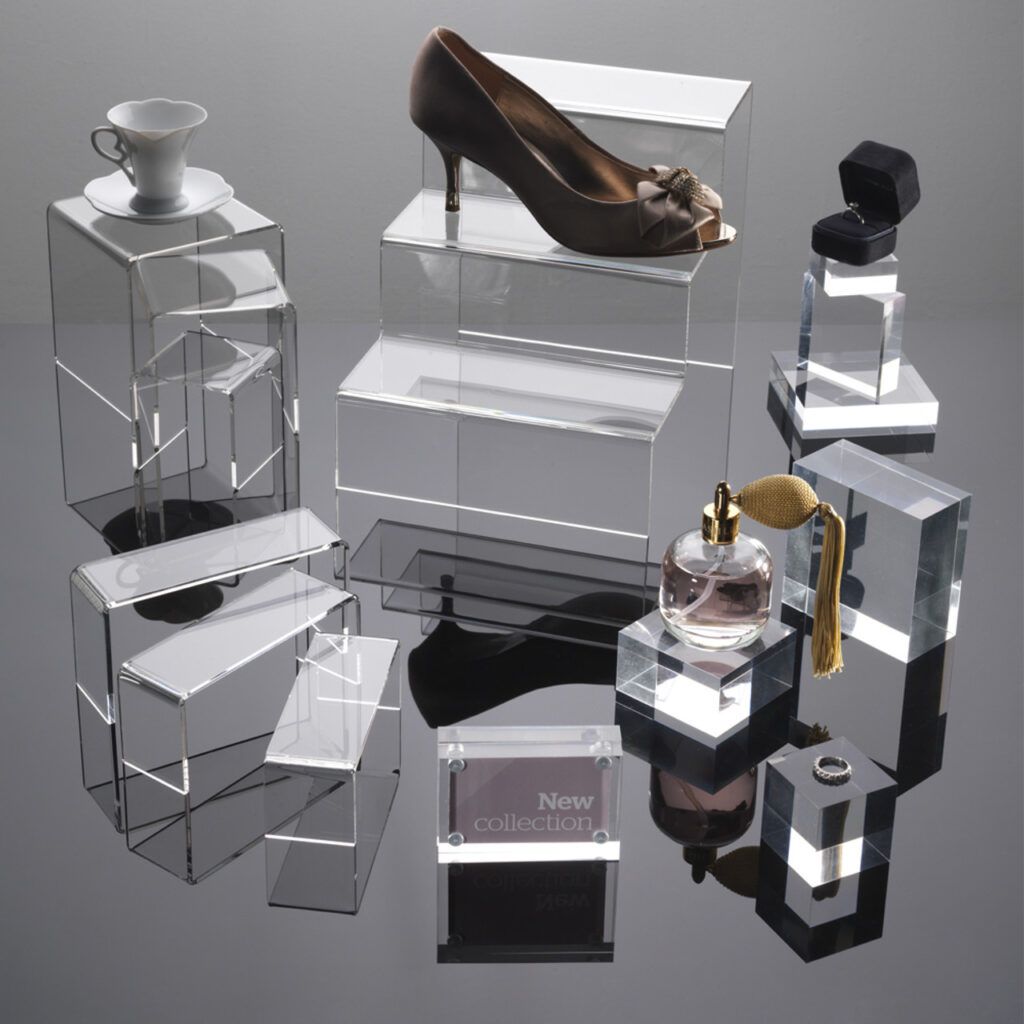
Creative Design Strategies for Acrylic Displays
Acrylic sheet displays are more than just functional branding tools. It presents a canvas for creativity to enhance customer engagement and reinforce brand identity.
A. Custom Shapes and Sizes
It’s indeed one of the most impactful ways to use acrylic displays. Custom acrylic signs can align with a brand’s personality and product offerings. It may involve –
- Unique Shapes to Tell a Story: A beauty brand may design curved acrylic stands to evoke elegance and sophistication. But a tech company can opt for angular geometric displays to symbolize innovation.
Example: Coca-Cola’s custom acrylic product holders are shaped like the signature bottle to reinforce brand recognition.
- Tailored Displays for Specific Products: Durable acrylic displays can be molded into unique compartments to highlight or hang individual products.
Example: Nike’s flagship stores feature sneaker-specific acrylic cases to angle shoes for maximum visual interest.
- Modular and Adjustable Displays: Acrylic shelving and stackable units allow brands to adapt the displays. And they accommodate changing inventory or seasonal promotions.
Example: Apple’s retail spaces use flexible acrylic shelving systems that can be reconfigured to highlight different product lines.
B. Use of Color and Branding Elements
Color plays a massive role in attracting attention and conveying emotions. Acrylic displays are ideal for incorporating brand-specific, vibrant colors, logos, and design aesthetics.
- Incorporating Brand Colors: Colored acrylic sheets can reinforce brand identity through pop displays against neutral backgrounds.
Example: McDonald’s bright red and yellow acrylic signage creates immediate brand recognition even under direct sunlight.
- Importance of Color Psychology: Colors trigger emotional responses, as red can create a sense of urgency, blue promotes trust, and green signals eco-consciousness.
Research indicates that color can increase brand recognition by up to 80%, making it a crucial design element for acrylic displays.
- Branding Integration: Acrylic can be laser-cut or UV-printed with logos and slogans for a professional finish.
Example: Tesla showroom displays have etched acrylic stands with illuminated brand logos to create a futuristic appeal.
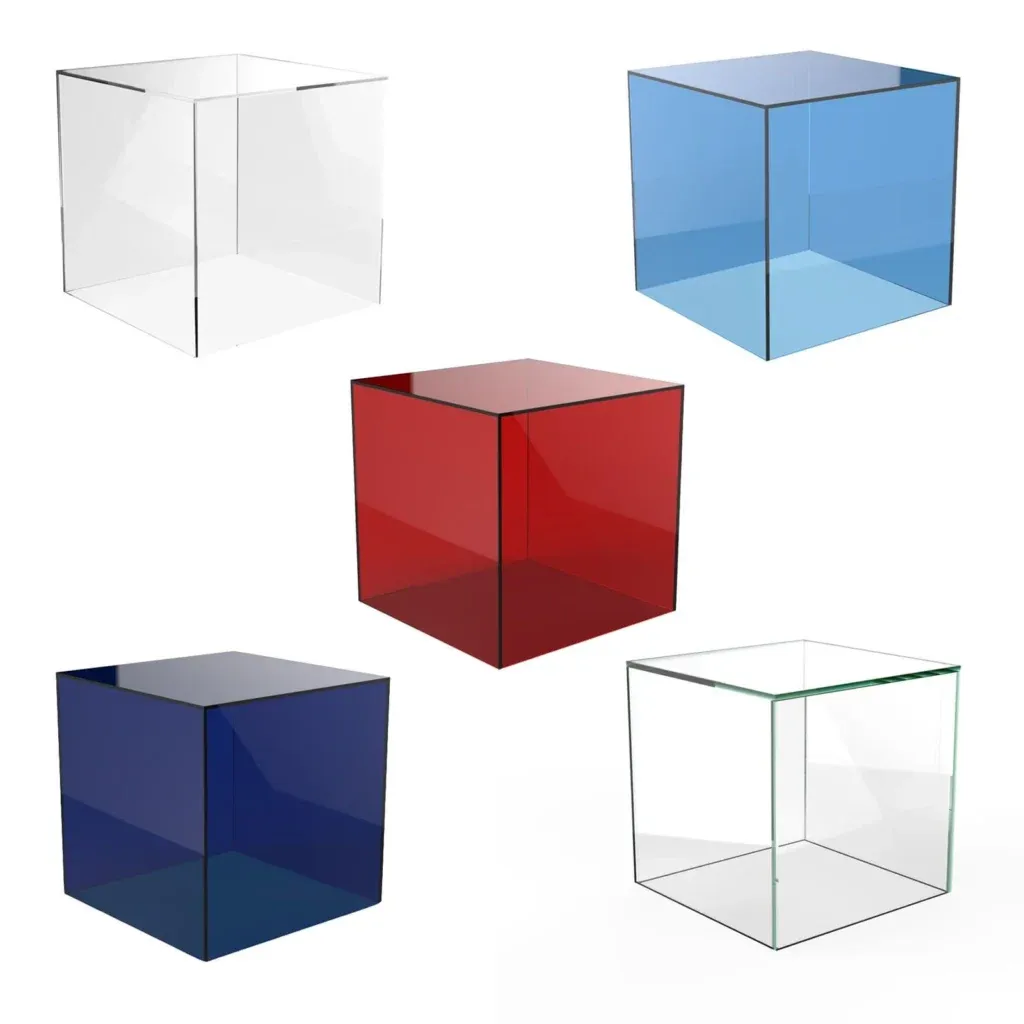
C. Texture and Finish Variations
Different finishes can change how customers perceive a display. It doesn’t matter whether it’s sleek and modern or soft and sophisticated.
- Glossy vs. Matte Finishes: Glossy acrylic creates a high-end, polished effect. It’s ideal for luxury and tech brands. Matte acrylic offers a subtle yet elegant look for boutique brands.
Example: Luxury watch retailers use glossy acrylic cases to enhance visibility. In comparison, boutique stores prefer matte acrylic for a minimalist appeal.
- Engraving and Frosted Effects: Laser-engraved acrylic adds a premium aesthetic. It allows brands to incorporate intricate logos or patterns. Frosted acrylic can provide a semi-transparent effect.
Example: Lexus car dealerships use frosted acrylic displays with engraved branding to create a premium customer experience.
Some Interactive Features to Engage Customers
· LED Lighting for Emphasis
Drill holes in the design tools, allowing light to pass through. Edge-lit acrylic displays enhance contrast and visibility. It should draw attention to specific products. Samsung stores use illuminated acrylic holders to make devices stand out against dark backdrops.
· Digital Screens for Dynamic Content
Acrylic frames can house digital screens to display product information, promotions, or brand stories. Nike’s acrylic-integrated digital screens in its flagship stores display athlete endorsements and product specifications.

· Augmented Reality (AR) Integration
Some brands incorporate AR into shatter resistant acrylic displays. Thus, it allows customers to scan QR codes and interact with virtual product demonstrations.
Ray-Ban’s smart glasses display integrates AR to let customers virtually try on different styles. And it comes from using acrylic-mounted QR codes.
· Optimizing Acrylic Displays for Visibility and Impact
Acrylic displays serve as branding tools to enhance product visibility and foster customer engagement. However, implementing acrylic sheets alone is no longer enough. Strategic placement, lighting techniques, and height optimization are crucial to make these displays stand out.
Strategic Placement: Positioning for Maximum Exposure
The acrylic display’s position directly affects its ability to attract attention and drive interactions. Identifying high-traffic areas and optimizing layout ensures visibility for appreciation.
01. High-Traffic Zones for Maximum Reach
- Storefront Windows: Positioning weather resistant acrylic displays near large windows helps capture passersby. They’re encouraged to step inside.
- Checkout Counters and Entry Points: Impulse purchases account for up to 40% of retail sales. Checkout-counter acrylic displays can become highly effective.
- Event Spaces and Trade Shows: Place acrylic branding materials near the entrance or focal areas. It can increase brand recall and foot traffic.
02. Height and Positioning Considerations
- Eye-level displays (between 4 – 6 feet) can maximize engagement. Items within direct sightlines receive 60% more attention than those placed too high or low.
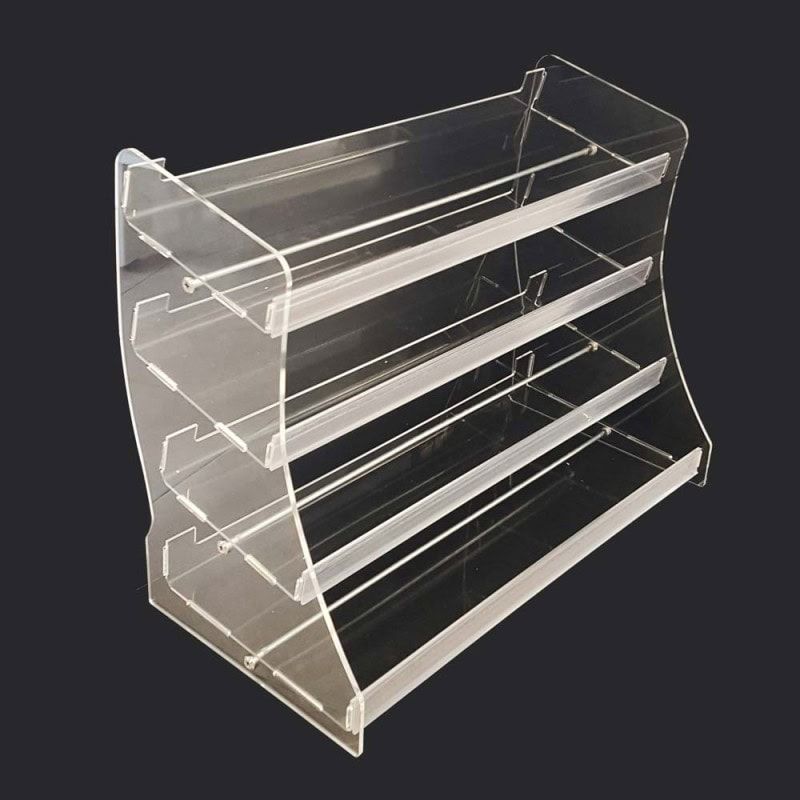
- Acrylic shelves with tilted or angled surfaces enhance visibility for branding elements and products, allowing them to stand out. Anyone can easily view everything from different angles.
03. Optimized Layout and Flow
- Cluster acrylic displays around focal points (best-selling products or interactive areas). It should guide customers naturally through the space.
- Apple stores have strategically placed acrylic display stands near product demo tables. Customers stay engaged for a long while browsing.
Lighting Techniques: Illuminating Acrylic for Impact
Proper lighting plays a pivotal role in enhancing the aesthetic appeal and functionality of acrylic displays. Thoughtful lighting strategies improve visibility, create ambiance, and direct customer focus.
01. LED Lighting for Enhanced Visibility
- Edge-lit acrylic sheets produce a striking and futuristic glow. Thus, signage and product displays become more eye-catching.
- Nike flagship stores employ embedded LED-lit acrylic sneaker stands. It instantly helps highlight their premium product lines.
02. Spotlights and Adjustable Lighting
- Use adjustable spotlights to target key areas of acrylic displays. It also prevents shadows to ensure equal or uniform visibility.
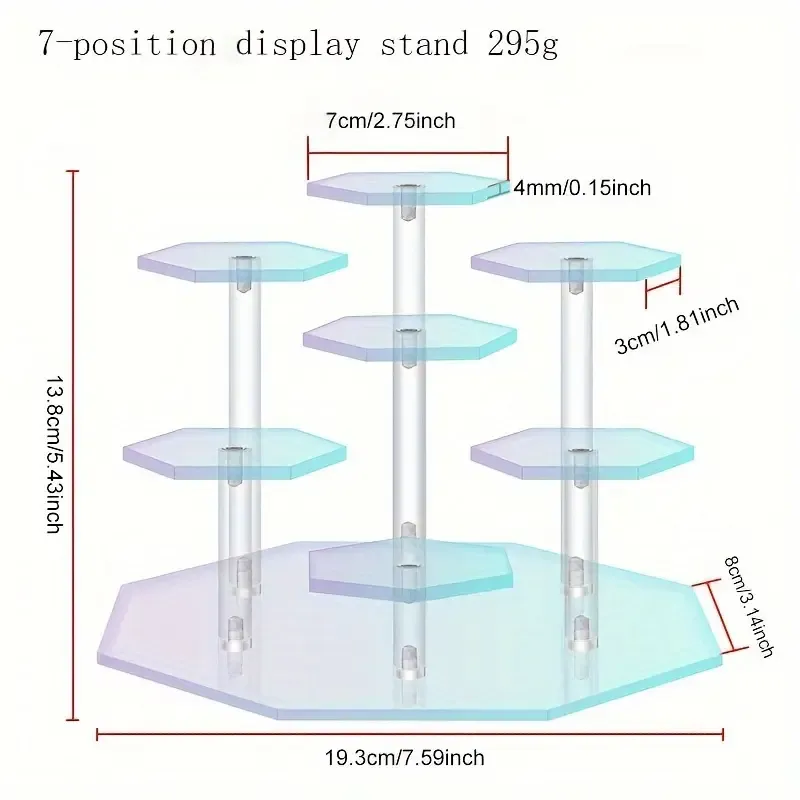
- Retail studies show that well-lit product displays increase sales by 20-30%. It also underscores the importance of lighting optimization.
03. Ambient and Colored Lighting Effects
- Colored LED lighting integrated into acrylic structures can reinforce branding themes. Consider warm lighting for luxury brands or cool tones for tech brands.
- Tesla showroom displays utilize blue LED backlit acrylic panels to align with their futuristic branding. It also introduces aesthetics and sleekness.
Use of Height and Layering: Creating Depth and Engagement
Acrylic displays are structured as stacked, layered, or arranged at varying heights. It significantly impacts the effectiveness. Multi-level designs offer a dynamic viewing experience, enhancing interaction.
01. Stacking and Layering for Depth
Layered acrylic sheets create a 3D effect. It helps brands add visual intrigue without overcrowding a space. Rolex display cases utilize multi-layered acrylic structures to develop depth, enhancing their luxury aesthetic.
02. Multi-Level Designs for Engagement
Staggered height displays encourage customers to view items from different perspectives. Tiered displays result in a 35% increase in interaction as viewers naturally explore layered designs more closely.
03. Modular and Adjustable Components
Creating adaptable acrylic shelving allows brands to modify their displays based on demand or promotions. Samsung stores utilize modular acrylic shelving to adjust product placements in response to new releases.
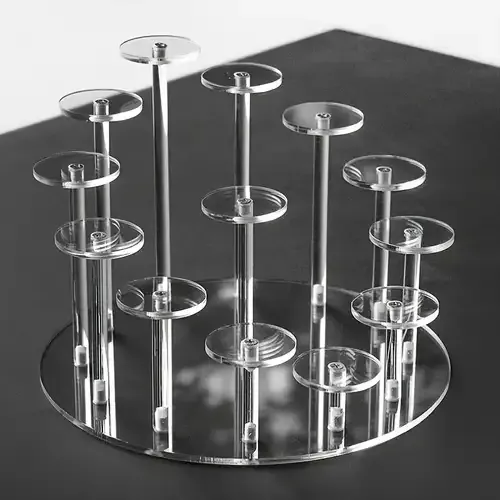
Incorporating Branding Messages in Acrylic Displays
Acrylic displays are powerful tools for messaging and storytelling, enhancing engagement. Strategic design can reinforce brand identity, highlight values, and drive conversions.
Signage and Text Placement
Clear and concise messaging is critical for effective branding. Acrylic displays can convey slogans, values, and promotional offers in a compelling manner.
- Prioritizing Readability: The text should be easily legible from a distance with appropriate font sizes.
- Minimalism Works: Signage with less than seven words is more effective in grabbing instant attention.
- Positioning Matters: Placing text at eye level or slightly above ensures visibility within a 4–6 ft range.
Storytelling Through Design
Acrylic displays, used as storytelling tools, effectively communicate a brand’s journey, mission, or product uniqueness. Design elements (visuals, typography, and spacing) make up the majority.
- Visuals and Imagery: Engaging visuals capture attention faster than plain text.
- Typography: Font choices can evoke different brand personalities. Luxury brands use serif fonts, while tech brands opt for sleek sans-serif designs.
- Spacing and Layout: Whitespace improves legibility by 20% while preventing overcrowded design.
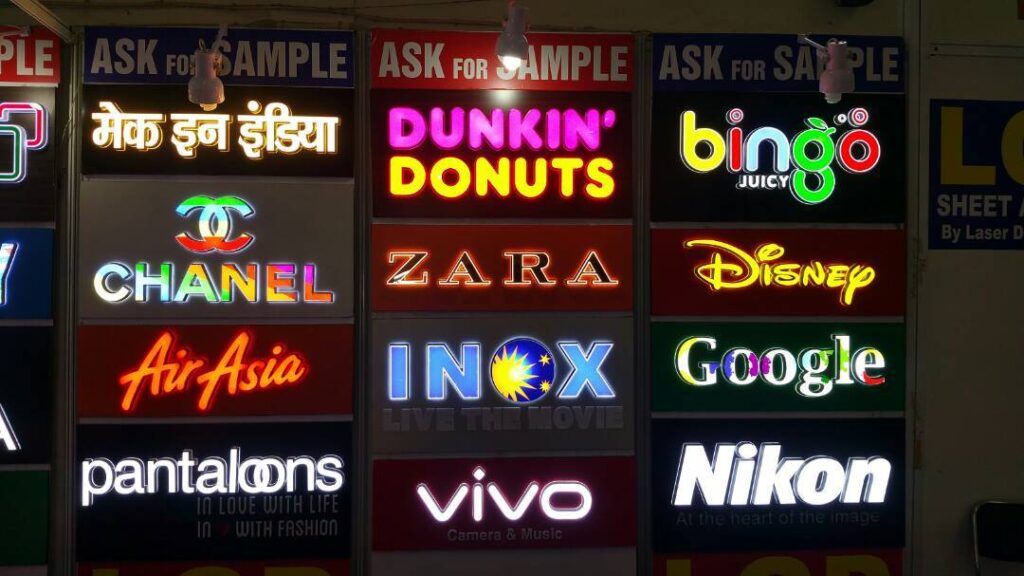
Call to Action (CTA)
CTAs can prompt consumer action (encouraging purchases, sign-ups, or interactive experiences). Acrylic displays can be optimized to effectively integrate CTAs.
- CTA Placement for Maximum Engagement: Positioning CTAs at eye level or checkout points can increase interaction rates.
- Action-Oriented Language: Using strong action verbs like ‘Shop Now,’ ‘Discover More,’ or ‘Try Today’ can enhance engagement.
- Integrating Digital and QR Code CTAs: Adding scannable QR codes to acrylic signage grants instant access to promotions.
Innovative Use Cases of Acrylic Displays
- Retail and Showroom Displays
High-end boutiques and retail brands rely on aesthetic presentation to attract customers. Acrylic displays offer premium visual appeal, crafting striking brand showcases.
Luxury brands utilize acrylic display cases to showcase their premium items. It also ensures protection with maximum visibility. Retail studies show that well-designed product displays increase sales by up to 40%.
Acrylic signage and tabletop displays promote seasonal offers without overwhelming the retail space. Brands can mold acrylic into custom-shaped stands for specific categories for engaging presentations.
- Trade Shows and Exhibitions
Trade shows demand high-impact branding from the start. And acrylic displays serve as attention-grabbing focal points that help exhibitors make lasting impressions.
Acrylic sheets can be molded into modular trade show stands. It allows brands to design exhibits that align with their identity. 80% of attendees remember brands with uniquely designed booths.
LED-lit acrylic sheets create a striking glow effect, making signage stand out in dimly lit exhibition halls. Brands utilize acrylic-mounted digital screens or QR code integrations to enhance engagement at exhibitions.
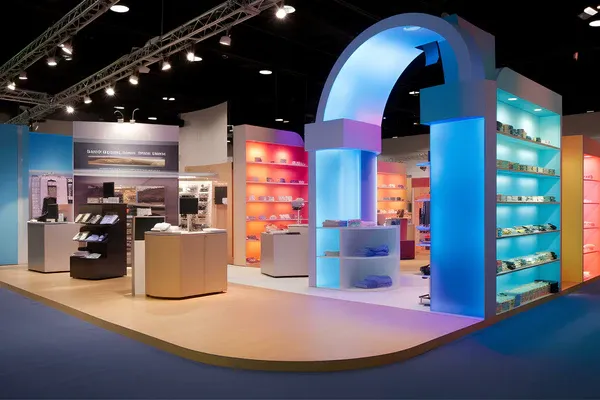
· Corporate and Office Environments
Corporate branding extends beyond digital presence. It manifests in physical spaces (office lobbies, meeting rooms, and award displays). Acrylic solutions reinforce professionalism and brand identity.
Office Lobby Branding: Acrylic signage enhances brand presence while maintaining a modern aesthetic in corporate spaces. Acrylic plaques and display cases are used for corporate award presentations.
About 85% of employees feel more valued in workplaces that showcase achievements. Businesses use custom acrylic whiteboards for vision statements, performance metrics, or meeting schedules.
Cost-Effective Strategies for Acrylic Display Production
Acrylic displays are widely used across various industries for their durability, sleek aesthetics, and branding appeal. However, producing high-quality acrylic displays within a cost-efficient framework requires careful execution.
a. Choose the Right Thickness
Standard acrylic thickness ranges from 2mm to 20mm. But 3mm – 5mm seems ideal for most signage and display purposes. Acrylic 10 mm or thicker is ideal for high-end displays.
However, it significantly increases material costs (by 30-50% than thinner options). Many retail brands opt for 3mm acrylic stands to balance durability and affordability.
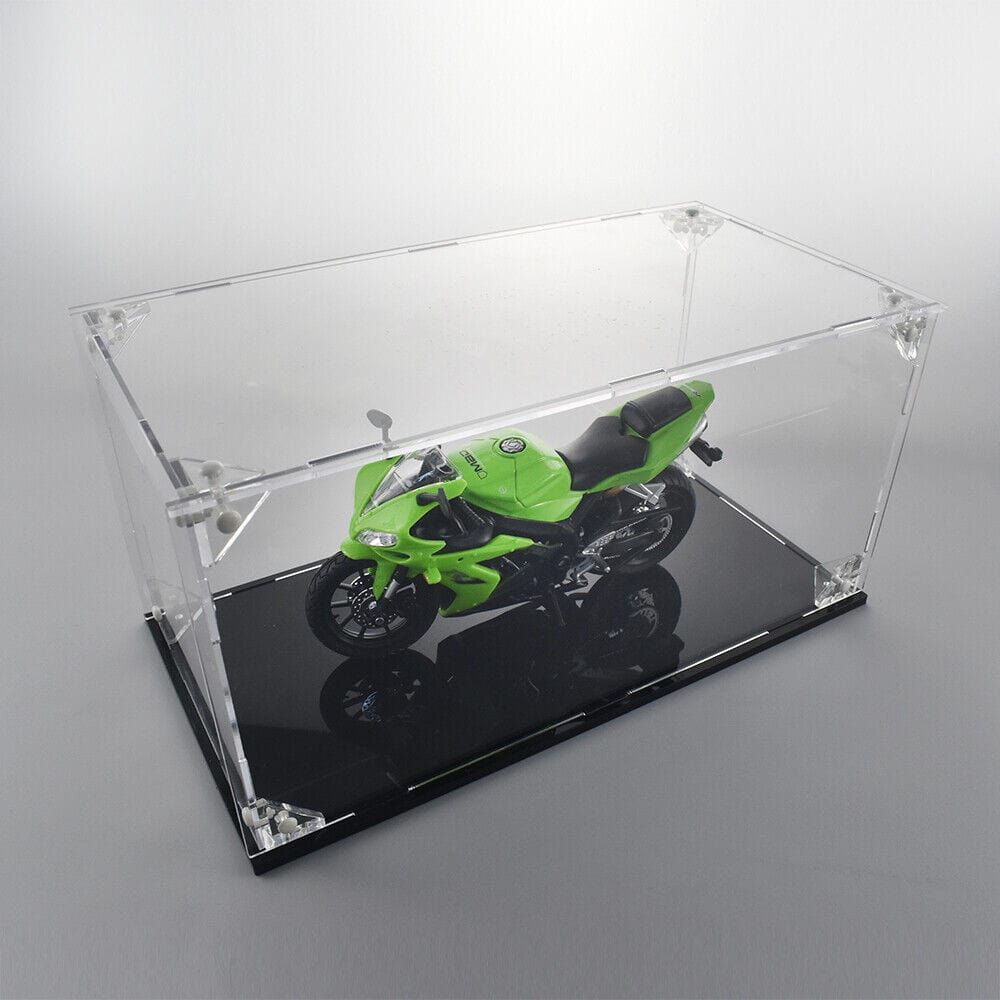
b. Select Economical Acrylic Grades
Cast acrylic offers superior clarity and durability. Extruded acrylic is 20% to 30% cheaper, which may suffice for standard signage and display purposes. Recycled acrylic is an eco-friendly and cost-effective alternative.
It can reduce costs by up to 25% compared to virgin acrylic sheets. Brands using eco-conscious designs (like IKEA) incorporate recycled acrylic materials for sustainability while lowering production expenses.
c. Optimize Customization Costs
Complex laser cutting or engraving adds 10% to 40% to production costs. Batch processing multiple units at once helps reduce expenses. Screen printing is 40% cheaper than UV printing for branding elements.
Such a process seems ideal for bulk production with acrylic sheets. Tech retailers use minimalist acrylic signage with simple branding to reduce unnecessary customization costs, achieving an upscale aesthetic.
d. Buy in Bulk for Cost Savings
Purchasing large quantities directly from manufacturers can result in cost savings of 15% to 35%. Custom bulk orders reduce waste, as manufacturers can provide pre-cut sheets in the required dimensions, eliminating the need for on-site cutting.
Large-scale retail chains, such as Walmart, source bulk acrylic signage from manufacturers to cut costs.
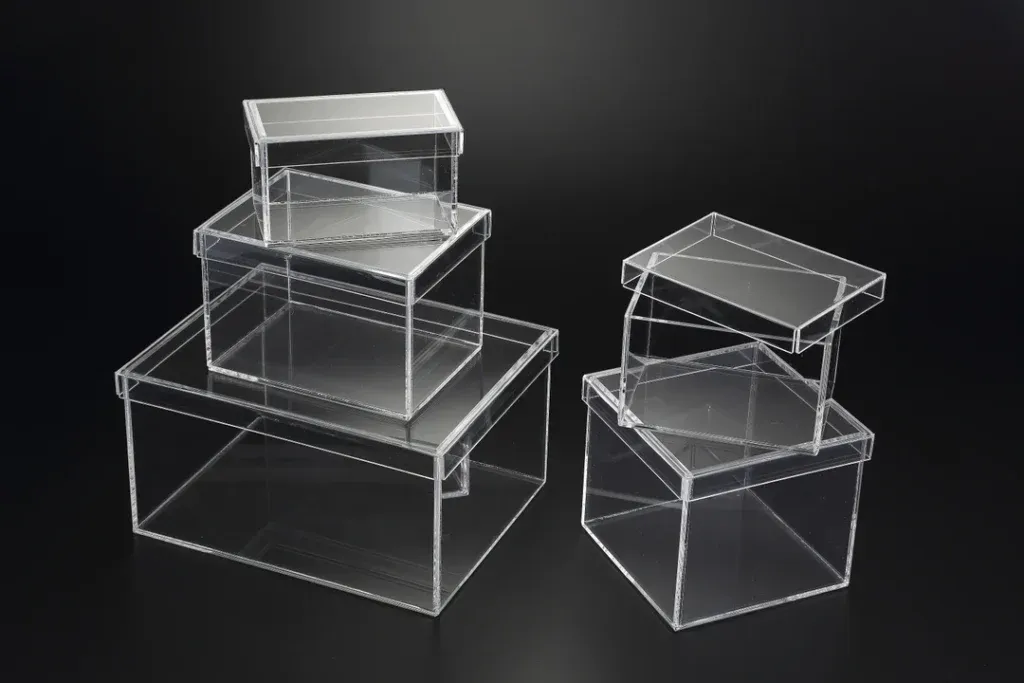
e. Find Reliable Suppliers for Competitive Pricing
Global manufacturers (Evonik, Plaskolite, and Lucite) offer sheets at competitive wholesale rates. Local suppliers offer better pricing for small-batch orders, resulting in reduced shipping charges of up to 20% – 25%.
Exhibition companies partner with regional acrylic suppliers for trade show displays to save on logistics.
f. Negotiate Custom Solutions for Scale Production
Long-term supplier agreements result in bulk discounts and priority production for repeat customers. Private-label acrylic production allows brands to customize sheet sizes and finishes without higher costs.
Electronics stores use custom-molded acrylic showcases with pre-cut designs to reduce overall costs.
Additional Tips for Acrylic Display Branding
01. DIY Tips for Small Businesses
Small businesses can craft visually striking displays without investing in high-end fabrication. Use simple techniques and available materials. Brands can develop unique acrylic presentations at a minimum.
Instead of investing in custom-cut designs, purchase standard-sized acrylic sheets. Assemble them with simple adhesives or brackets. Boutique stores use stackable acrylic risers to create multi-level displays.
02. Acrylic Paint and Vinyl Stickers
Instead of laser engraving, vinyl decals or acrylic-safe paint can add logos and designs. Independent coffee shops utilize painted acrylic menu boards to create visually appealing handwritten displays. Printable vinyl stickers on second surface printing work exceptionally well for logos or graphics.
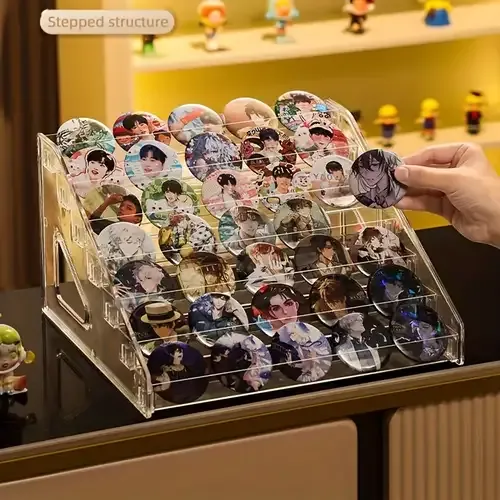
03. LED Strip Lights for Illumination
Adding low-cost LED strips to acrylic edges creates a luxury glow effect. It doesn’t even require special fabrication. Small tech shops integrate edge-lit acrylic signage to create premium-looking displays.
It’s a highly popular, cost-efficient lighting solution. LED strips cost about 70% less than embedded acrylic LED panels. Standard printing with customization options would be your ideal choice for versatility.
04. Repurposing Old Acrylic Materials
Businesses can also consider reusing or repurposing older acrylic signage. It could be polishing scratches, applying frosted overlays, or cutting sheets into smaller reusable display components.
Fashion retailers execute a project to repurpose outdated acrylic signs into mirrored display surfaces.
Conclusion
Acrylic sheet displays have been visually compelling branding tools. It empowers brands and businesses with exquisite and practical strategies to showcase their identities. Prioritize a well-balanced combo of aesthetics with functionality for maximum success.
Get Your Acrylic Sheet Display from JUMEI
Do you want some top-notch acrylic brand display for more engagement? Or are you just looking for the most reliable acrylic sheet supplier? Jumei Acrylic Manufacturing is ready to meet your needs with 15+ years in the business. Contact us to know how our experts can help.

